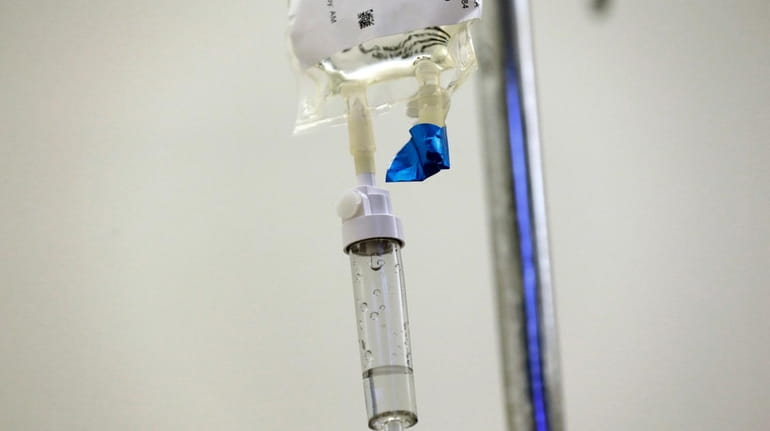Good news for breast cancer care

A recent study has concluded that many women with early stage breast cancer do not benefit from chemotherapy. Credit: AP / Gerry Broome
Ten years ago, my mother was part of a breast cancer bioethics panel at Smith College in Massachusetts. Sitting among researchers and ethicists, she filled the role of the patient.
An audience member asked about her decision to go through bouts of chemotherapy. She replied: “When they tell you they need to do things to save your life, you say, ‘Anything! Anything! I have small children.’ ”
A study by TAILORx — a national breast cancer trial — recently concluded that many women with early stage breast cancer do not benefit from chemotherapy. It’s a significant finding — one that works against frequent overdiagnosis and overtreatment in the United States. It is also great news for many women who would have had to endure chemotherapy, which saves lives but has very serious risks. While treatment means hair loss and nausea, side effects include heart and nerve damage as well as an increased risk of infection and leukemia.
“The thing about medicine,” said Karuna Jaggar, executive director of Breast Cancer Action, “is once something gets established as the standard, it is very hard to pull back from it.” She’s right. Chemo is the standard of treatment for breast cancer, and many women perceive it as a means of survival despite its poisonous effect on the body.
A 2017 study that surveyed 2,106 physicians on overtreatment determined that on average, doctors believe 20.6 percent of all medical care is unnecessary. Treatment for breast cancer is no exception. The use of mammograms has increased, and the benefits of constant examinations are often overstated. While the possibility of detecting malignant tumors early is important, many benign tumors are detected and treated with brutal and unnecessary chemo. Ironically, in this case, treatment is much worse for the patient’s health.
Double mastectomies also have increased. Despite common belief, removing the second breast doesn’t improve women’s survival rates (unless the rare BRCA gene is present). It also means twice the complication rate of a single mastectomy.
We live in a the-more-treatment-the-better culture. This derives from two things: individual fear and a for-profit medical system. People are willing to put their bodies through anything because fear is a huge component of breast cancer, and understandably so. Many companies play off this fear by pushing a simplistic, “one size fits all” narrative. Of course, breast cancer is a public health crisis, but the profit being made from Pink Ribbon products, for example, is doing nothing to help the overtreatment epidemic. It is very hard to say no to a treatment when you fear for your life, and cancer-based organizations are advocating it.
Overtreatment is also a large problem in terms of inequality. “We typically think of health inequity as a lack of treatment,” said Jaggar, “but it can also be too much treatment, or the wrong treatment.” Lack of access to information about treatment is prevalent for poorer women and women of color. Black women, for example, are likely to be overtreated with chemo and undertreated for pain.
It’s almost paradoxical — underserved communities end up being overtreated because they don’t have as much access to competent, affordable, and most important, updated evidence-based health care. It is crucial that data from the new study get to all patients so they can make informed chemo decisions.
My mother had stage 3c metastatic breast cancer, and these recent findings wouldn’t have helped her. But still, she was acutely aware of the chemo problem. In the panel at Smith, she said patients are often “giving permission to the health professionals to ‘do anything’ and then suffering the indignities of what that might bring.”
I hope that some women now won’t have to.
Isobel van Hagen is an intern with Newsday Opinion.
